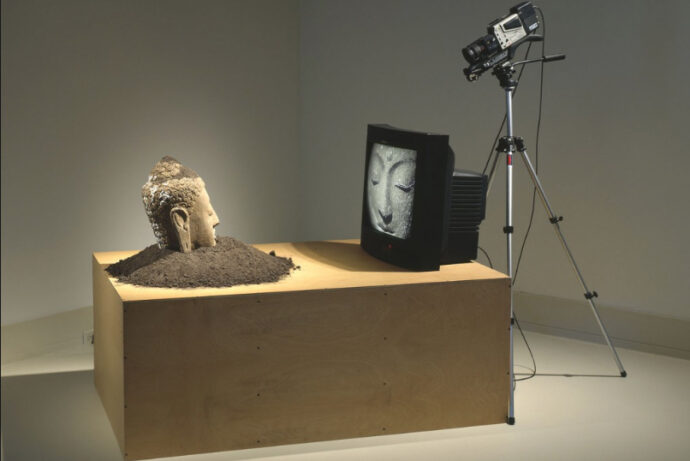Why the current cultural fetish for zombies? In 2014’s Hooked, Nir Eyal ventures a guess: “Perhaps technology’s unstoppable progress—ever more pervasive and persuasive—has grabbed us in a fearful malaise at the thought of being involuntarily controlled.” We worry that we’ve become slaves to a tech-induced malady, argues Eyal, so we can relate to those ailing automatons on screen.
Eyal may have a point. A recent study showed that we check our phones every 4.3 minutes. Our relationship to those technologies looks more like a compulsion than it does a happy, freely-chosen relationship.
But Nir Eyal is not warning consumers about the dangers of smartphone addiction. On the contrary, Hooked is a blueprint for designers who want to make their products more addictive, and therefore more popular and profitable. Eyal lays out a four-part formula for user enticement, based on his work with leading tech companies. The formula helps designers use a system of digital triggers and reward loops to hook users, keeping them engaged.
It’s a guide to making zombies, not to curing them.
There has been backlash to Eyal’s book, mostly focused on consumer protection policies. In Aeon, Cubit co-producer Michael Schulson argues for government regulation of addictive technologies. Slate magazine founder Jacob Weisberg, writing in the New York Review of Books, advocates age restrictions or flat-out bans on app use. Both of these approaches presume a fundamental weakness in human agency. State intervention is the only way, these writers argue, to protect us against ourselves.
Well, sort of. These kinds of provisions don’t protect agency so much as they determine an acceptable degree to which it will be lost. They don’t address the deeper social forces and habits of mind that enslave users to the personal computer in their pocket.
Neither do anti-tech responses at the other end of the political spectrum, which urge individuals to summon the willpower necessary to resist temptation entirely on their own accord. This approach undergirds cute listicles on how to avoid web bingeing. It’s also behind the far more strident unplugging movement, which asks adherents to voluntarily forsake the internet altogether.
As New Yorker contributor Casey C. Nep laments, “What sex was for the Puritans, technology has become for us.”
Meditation, Not Willpower
The split-second attention economy establishes the battleground of consumer capitalism in the most intimate place of all: the mind.
I’d like to argue that in developing techniques of personal resilience—and building movements of communal resistance—the net-addicted zombie would do well to consider the lessons of Buddhism, a tradition that has examined human consciousness for millennia with the express goal of understanding and neutralizing excess desires.
Eyal’s formula for addictive apps depends on consumers indulging in “internal triggers” or itches prompted by negative emotions. It’s what happens when a pang of loneliness suddenly begets a nightlong Facebook session. Attention-grabbing tools are available at the tips of our fingers, such that these impulses embed themselves deeply into our lives. Gratification follows urge in quick and unwitting succession.
The first step in countering these impulses is the development of a moment-by-moment awareness. Such a mindset acts as a radar warning you that an internal trigger has arisen. Even more important than anticipating triggers, though, is understanding what causes them. If you can dig out the roots of impulsive behavior, you can prevent it from ever taking hold.
When I spoke to Eyal, he argued that triggers are “age-old pains and aches that we have in our life” which “app makers are not necessarily creating.” In his eyes, every human has a set volume of needs and wants. Instead of proliferating those desires, apps do the important work of satisfying them.
But Buddhism tells a very different story. Buddhist teachings hold that human desire is insatiable—full stop. In fact, the more a person gratifies it, the more it grows. Samsara—Buddhism’s endless cycle of birth, death, and rebirth—can be understood allegorically as the condition of someone who misunderstands the self as fixed and desire as something that can be entirely alleviated. You can’t bring your possessions to the grave, nor your addictions. By recognizing existence as impermanent and impulses as fleeting, a Buddhist acknowledges the futility in trying to exhaust human wants by feeding them.
Where once a person might have sat pleasantly in a waiting room or on a train, he now reaches immediately for a smartphone. As dependence grows, personal agency diminishes.
Seen in this light compulsions demand, above all else, restraint. After all, an attentive and wise consumer can still indulge an internal trigger, albeit mindfully. “Agency needs to happen adjacent to one’s meditation,” explained Eido Frances Carney, the abbess at the Olympia Zen Center. “If I notice myself absorbed in something useless, I ought to be able to change it. I have to exercise agency today in order to exercise it tomorrow.” Action and reflection are mutually reinforcing.
More than simple willpower, Buddhism offers up a framework and set of contemplative practices that work alongside behavioral modification. As you resist the impulse to refresh email, you becomes more aware of the impermanent yet recurring nature of that impulse. In turn, you become better able to intervene on your own behalf. The choice emerges naturally from tectonic shifts below—rather than from post hoc self-flagellation happening above.
Eyal, an expert on habit-formation, says that “meditation, or changing our perception of reality by other means” is a “very, very effective technique.” Making a habit of restraint can, paradoxically enough, free you from habit altogether.
Valley of the Buddhist Billionaires
If Buddhist teaching and practice is such a formidable weapon in the fight to reclaim our minds, why then has it become so popular in Silicon Valley? Buddhism seems like the ally of the attention economy’s engineers, rather than the resistance.
Google, for instance, has hosted Buddhist luminaries like Zen monk Thich Nhat Hanh and meditation instructor Jon Kabat-Zinn at its offices. Chade-Meng Tan, a former software engineer whose job title is “Jolly Good Fellow,” oversees a popular meditation course offered to the company’s employees. Meanwhile a gathering called Wisdom 2.0 brings together Buddhist teachers and tech CEOs. Once an annual event in San Francisco, Wisdom 2.0 has grown to a year-round series of conferences held across the United States.
“There’s a growing awareness among [techies] that their minds are insane,” said Vince Horn, founder of a podcast and online community called Buddhist Geeks that examines the intersection of Buddhism and technology. “Insanity is directly proportional to the number of hours spent at a tech startup.” In Horn’s view, techies turn to Buddhism, especially the practice of mindfulness, because it calms them down.
Simple as that.
Tech isn’t any old community—it’s an industry, divided like any other into managers and employees. It is management that has taken up mindfulness as a tool for fostering more creative and effective workers. Hoping to ward off the burnout caused by technological immersion, executives offer up mindfulness for the company’s sake, not the employee’s. Horn borrowed a metaphor from the industry, saying Silicon Valley is driven by “an industrial operating system” that prioritizes “monetary growth at the expense of human social capital, which has devastating effects.”
In other words, there’s a libertarian strand of Buddhism among those who design and distribute tech products. This libertarian tendency complicates any advocacy for the teaching as a means for protecting the industry’s consumers. Framed the wrong way, Buddhism-inflected arguments hold app users entirely responsible for summoning the will power necessary to resist addictive products. They let tech companies off the hook for designing apps that mimic digital slot machines.
But tech resisters should not throw out the Buddhism with the bathwater.
By invoking both personal development and countercultural norms, the tradition models the comprehensive approach necessary to escape the clutches of addictive technology. The responsibility to resist does not fall exclusively on either the individual or the collective, but on both.
That’s why a progressive politics, of the kind exemplified by the engaged Buddhism movement, is also vital. As rising wealth inequality squeezes the middle and working classes, we have to join the technological rat race, no matter its ill effects. The choice to resist checking text messages is only viable for the privileged. It is not available to a fast food worker waiting to see if she gets called in for a shift, or an adjunct professor supplementing his pay through completing odd jobs on TaskRabbit.
Unless resisters join the fight for more robust labor laws and an expanded social safety net, their efforts to combat the cycle of tech-induced desire will fall short.
Eyal is right to invoke zombie movies but, in defending the ethics of his work, he prematurely crowns everyday people victorious in their battle against technology. “We are like the heroes in a zombie film,” he wrote. “Threatened but ultimately more powerful.” The ongoing explosion of smartphone use belies Eyal’s point, as does his own all-too-effective formula for hooking us.
This zombie film is still playing on all screens, but with a twist: Brad Pitt is not going to show up with moxie and a gun. Instead we will save ourselves, collectively and incrementally. And yeah, I realize that sounds like a boring movie—the kind I might leave playing on Netflix in a separate tab as I catch up on email.
Also on The Cubit: Put your money where you mind is
Follow The Cubit, RD‘s religion and science portal, on Twitter @TheCubit





